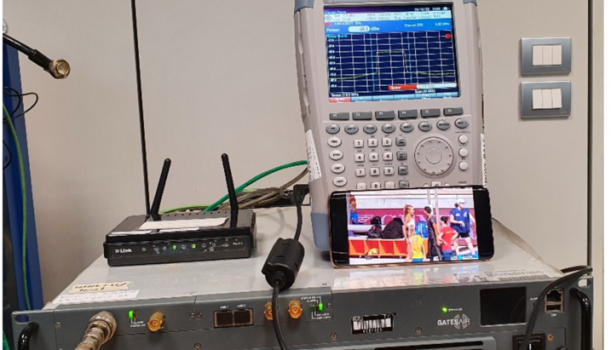Rai Radiotelevisione italiana is the national public broadcasting company of Italy. In particular, the Rai Centre for Research, Technological Innovation and Experimentation (CRITS), it is part of the Rai technological area under the responsibility of the Chief Technological Officer (CTO) with which it collaborates in identifying and defining the company’s technological strategies. It plays a central role in planning technological activities and in supporting the Company in fulfilling the Rai Italian State service contract as regards in particular the technological research activities. It studies new technologies and trends related to the production, coding and storage of the audio/video material, and related to the production and distribution of multi-platform multimedia content and services, to the integration with social media and to services for inclusion. It also deals with technologies and services for transmission on fixed and mobile networks, broadcast and broadband.
In the context of the 5G-TOURS project, RAI is mainly involved in the Turin area trials in more use cases, in particular, in augmented tourism experience use case, RAI is creating content to be used in the implementation of the experience: this includes models of the rooms and artistic objects to be used as additional content to enhance the visit of the museum, in particular, scanned rooms will be used also for virtual navigation of the robot in the Robot-assisted museum guide use case. In the television field it is common to use virtual “environments” and “objects” to generate “Virtual Reality” (VR), “Augmented Virtuality” (AV), “Mixed Reality” (MR) and “Augmented Reality” (AR) environments which are exploited both for the production of TV programs adopting new formats and for side applications supporting the television production.
In the context of 5G Broadcast delivery to massive audiences use case, the audio/ video content is transmitted via the broadcasting network of RAI in a downlink-only mode to all users at once. Using this approach, the network performance does not change regardless the number of devices receiving the signal. This option is a broadcast-centric receive-only approach that utilizes a High-Power High-Tower (HPHT) topology to transmit the content. Following the project discussions about the service layer, this use case has been enriched to consider the delivery of MPEG-DASH formatted content allowing the use of the adaptive bit-rate HTTP-based streaming solution.
Finally, in the remote and distributed video production use case, the main objective is to exploit the 5G-TOURS network features for remote television production, analyzing how 5G networks could support various scenarios in which high-quality video is generated and transmitted. In a distributed TV video production context, the content needs to be produced by mixing local and remote audio and video contributions in the TV studio. The remote contributions are thus delivered to the main editing site via the 5G network in real time.
The challenging implementation for the Use Case is the Itinerant Orchestra in which some musicians located in the main concert hall play together with some other itinerant musicians walking in the streets while approaching the concert hall. Each itinerant musician is followed by one (or more) cameraman shooting their performance and providing cues to stay in synch with the main orchestra performance. The high-quality AV signal is transmitted via the 5G network to the main editing facility where it is properly processed and mixed with both the rest of the itinerant musicians and the orchestra located in the concert hall. The spectators in the concert hall will watch the itinerant musicians playing and walking in the streets towards the Palazzo Madama (as real time virtual presence) on one or more LED walls and listen to their performance via an amplification system, mixed to the local orchestra, until they enter the concert hall and join the orchestra.
In this direction, RAI radiotelevisione Italiana will leverage the 5G-TOURS project to gain knowledge about new features offered by 5G technology in the areas of interest of a media company. RAI will exploit the project results in two different areas: the content distribution to the final user, enriching the television experience on different types of terminals, and the television production, using the 5G network and features to implement remote and distributed production, facilitating the covering of events and exploiting 5G features by providing new services: from high quality audio/video streaming up to the mixed reality immersive services. RAI is collaborating with other partners of the project for the creation of state of the art television products in order to exploit 5G-TOURS technologies in the area of the television production and in the area of distribution, taking into account UHD content and Immersive experiences. In this environment a particular focus of exploitation activities for RAI is about:
- Content creation and OTT services in the 5G era.
- Cultural heritage for touristic and museums services.
More in general, RAI will leverage the 5G-TOURS project to gain as knowledge about 5G service layer, that will be precious also for future works (research and industrial) in the environment of new generation networks.


